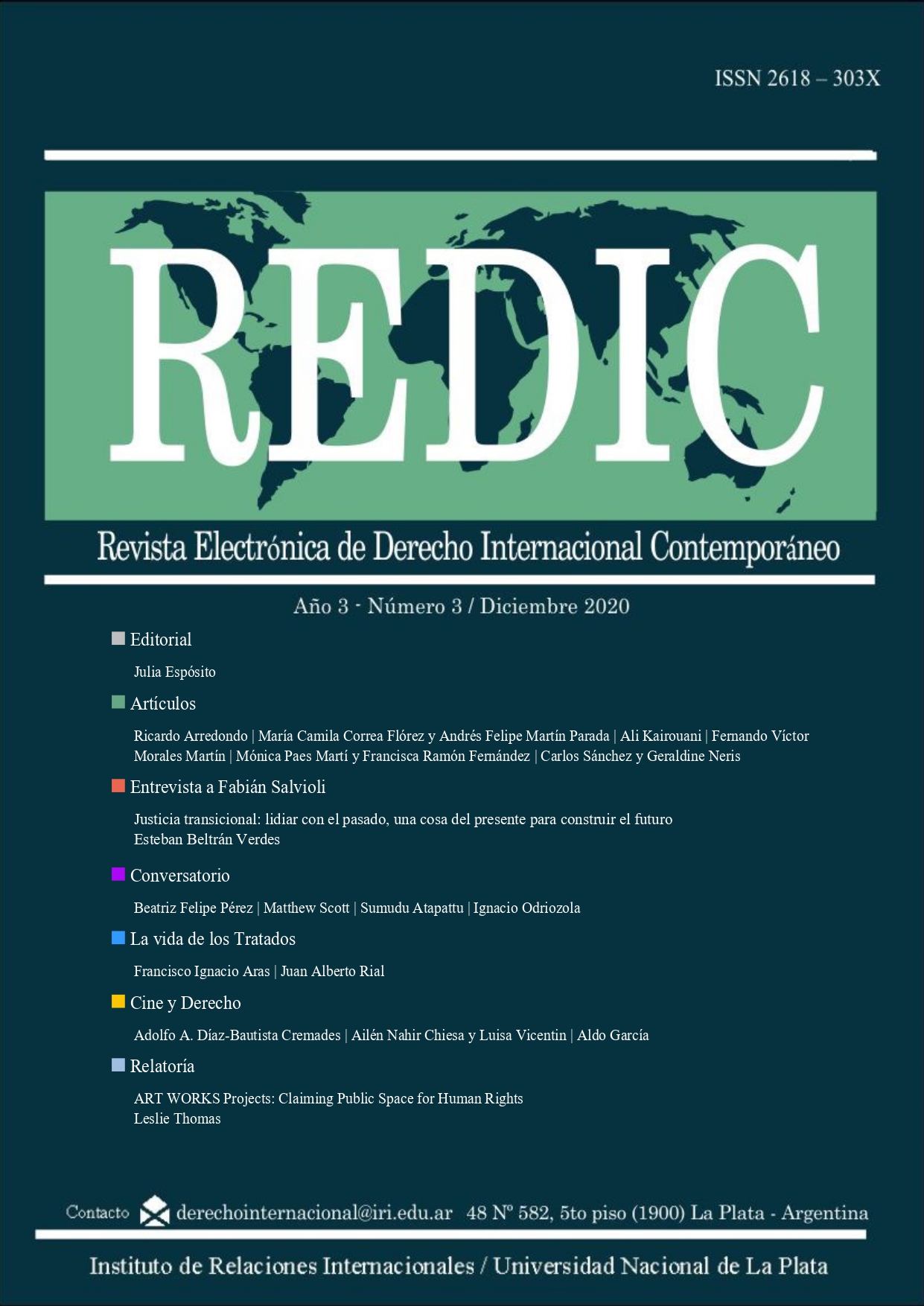Bridge of Spies
Analysis of the film from the perspective of International law
DOI:
https://doi.org/10.24215/2618303Xe010Keywords:
Cold ward, espionage, human rights, inviolability of the home, right of defenseAbstract
The film "The Bridge of Spies" (Spielberg, 2015), based on real events, reflects the reality of international relations between blocks at the beginning of the Cold War, when espionage was part of the usual defense activity. Through the process of prosecuting and subsequently releasing Soviet spy Rudolph Abel we can examine relevant issues such as the universality of the right of defense, the validity of human rights and the search for international personality by emerging states.
Downloads
References
El puente de los espías (Spielberg, 2015).
Trial Silverthorne Lumber Co., Inc. v. United States, 251 U.S. 385 (1920).
Downloads
Published
How to Cite
Issue
Section
License
Aquellos autores/as que tengan publicaciones con esta revista, aceptan los términos siguientes:
- Los autores/as conservarán sus derechos de autor y garantizarán a la revista el derecho de primera publicación de su obra, el cuál estará simultáneamente sujeto a la Licencia de reconocimiento de Creative Commons (BY-NC-SA) 4.0 que permite a terceros compartir la obra siempre que se indique su autor y su primera publicación esta revista, no se haga uso comercial, y si se remezcla, se transforma o se crea a partir del material, se debe distribuir bajo la misma licencia del original.
- Los autores/as podrán adoptar otros acuerdos de licencia no exclusiva de distribución de la versión de la obra publicada (p. ej.: depositarla en un archivo telemático institucional o publicarla en un volumen monográfico) siempre que se indique la publicación inicial en esta revista.
- Se permite y recomienda a los autores/as difundir su obra a través de Internet (p. ej.: en archivos telemáticos institucionales o en su página web) antes y durante el proceso de envío, lo cual puede producir intercambios interesantes y aumentar las citas de la obra publicada. (Véase El efecto del acceso abierto).





















